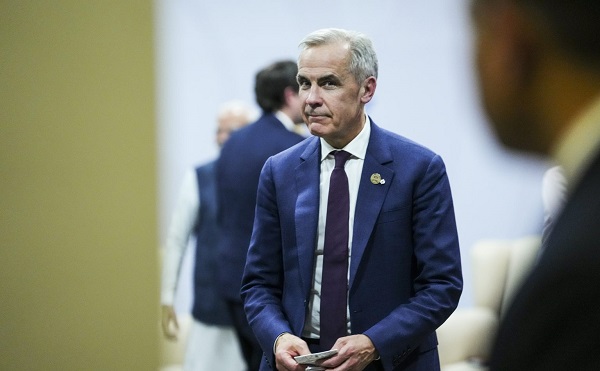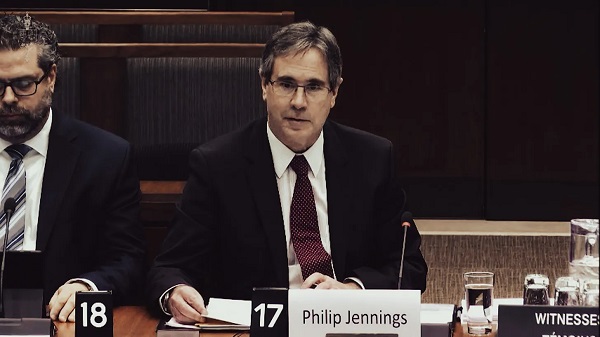Uncategorized
EU’s Barnier hopes Brexit deal possible in ‘coming weeks’

LUXEMBOURG — The European Union and Britain are seeking to get their divorce negotiations back on track at Wednesday’s Brexit summit after botched weekend talks pushed back expectations of a deal into November at the earliest.
The EU’s chief Brexit negotiator Michel Barnier said Tuesday that negotiators are working towards ensuring Britain leaves the EU next March in an orderly fashion and to secure a comprehensive deal “in the coming weeks.”
Barnier’s time-horizon has shifted after talks hit an impasse on Sunday, dashing hopes of a breakthrough at this week’s two-day summit of the EU’s 28 leaders, including Britain’s Theresa May, in Brussels.
Speaking on the eve of the summit, Barnier said several issues still needed to be dealt with, including the future of the border between EU member Ireland and Northern Ireland, which is part of the United Kingdom. Many aspects of the divorce have already been agreed, such as what Britain owes the EU, but other aspects relating to the future relationship have still to be resolved, notably relating to the border on the island of Ireland.
“We are not there yet,” he said. “We will use that time, calmly, with serious intent to find the overall deal in the coming weeks.”
Barnier’s comments have more or less put paid to any prospect of a decisive moment at this week’s summit. Since the Brexit discussions began over 18 months ago, this October’s summit had been earmarked as the most likely date for any agreement given the need to get necessary parliamentary approvals before Britain officially leaves the EU next March.
While hoping for a deal, the EU insisted Tuesday it is pressing forward with contingency plans to protect the 27 member states if Britain crashes out of the bloc on March 29 without a deal and without a transition period to the future relationship of the two sides. European Council president Donald Tusk has warned that the chances of Britain crashing out without a deal are higher than ever before.
Germany was exhorting British Prime Minister Theresa May to come to Wednesday’s summit with a positive message that could kick-start the stalled talks again.
“Take responsibility and be constructive,” said Germany’s Europe Minister Michael Roth when he arrived for talks with Barnier in Luxembourg.
In London, May urged her divided Cabinet to back her amid growing talk that several members are ready to resign in protest at her plans.
During a three-hour Cabinet meeting Tuesday, May said the government must “stand together and stand firm.”
The EU is waiting for new proposals from Britain. But May’s room for compromise is restricted by divisions within her Conservative Party, and by her reliance on Northern Ireland’s Democratic Unionist Party, which opposes any compromise on the border.
Several senior ministers, including Brexit Secretary Dominic Raab and Foreign Secretary Jeremy Hunt, met privately over pizza on Monday evening and emerged professing support for the prime minister.
International Development Secretary Penny Mordaunt said “no one is planning on resigning. We are all doing our jobs and we are trying to get the best deal for this country, and that’s it.”
___
Lawless reported from London. Lorne Cook contributed from Brussels
Raf Casert And Jill Lawless, The Associated Press
Uncategorized
Cost of bureaucracy balloons 80 per cent in 10 years: Public Accounts

The cost of the bureaucracy increased by $6 billion last year, according to newly released numbers in Public Accounts disclosures. The Canadian Taxpayers Federation is calling on Prime Minister Mark Carney to immediately shrink the bureaucracy.
“The Public Accounts show the cost of the federal bureaucracy is out of control,” said Franco Terrazzano, CTF Federal Director. “Tinkering around the edges won’t cut it, Carney needs to take urgent action to shrink the bloated federal bureaucracy.”
The federal bureaucracy cost taxpayers $71.4 billion in 2024-25, according to the Public Accounts. The cost of the federal bureaucracy increased by $6 billion, or more than nine per cent, over the last year.
The federal bureaucracy cost taxpayers $39.6 billion in 2015-16, according to the Public Accounts. That means the cost of the federal bureaucracy increased 80 per cent over the last 10 years. The government added 99,000 extra bureaucrats between 2015-16 and 2024-25.
Half of Canadians say federal services have gotten worse since 2016, despite the massive increase in the federal bureaucracy, according to a Leger poll.
Not only has the size of the bureaucracy increased, the cost of consultants, contractors and outsourcing has increased as well. The government spent $23.1 billion on “professional and special services” last year, according to the Public Accounts. That’s an 11 per cent increase over the previous year. The government’s spending on professional and special services more than doubled since 2015-16.
“Taxpayers should not be paying way more for in-house government bureaucrats and way more for outside help,” Terrazzano said. “Mere promises to find minor savings in the federal bureaucracy won’t fix Canada’s finances.
“Taxpayers need Carney to take urgent action and significantly cut the number of bureaucrats now.”
Table: Cost of bureaucracy and professional and special services, Public Accounts
| Year | Bureaucracy | Professional and special services |
|
$71,369,677,000 |
$23,145,218,000 |
|
|
$65,326,643,000 |
$20,771,477,000 |
|
|
$56,467,851,000 |
$18,591,373,000 |
|
|
$60,676,243,000 |
$17,511,078,000 |
|
|
$52,984,272,000 |
$14,720,455,000 |
|
|
$46,349,166,000 |
$13,334,341,000 |
|
|
$46,131,628,000 |
$12,940,395,000 |
|
|
$45,262,821,000 |
$12,950,619,000 |
|
|
$38,909,594,000 |
$11,910,257,000 |
|
|
$39,616,656,000 |
$11,082,974,000 |
Uncategorized
Trump Admin Establishing Council To Make Buildings Beautiful Again


From the Daily Caller News Foundation
By Jason Hopkins
The Trump administration is creating a first-of-its-kind task force aimed at ushering in a new “Golden Age” of beautiful infrastructure across the U.S.
The Department of Transportation (DOT) will announce the establishment of the Beautifying Transportation Infrastructure Council (BTIC) on Thursday, the Daily Caller News Foundation exclusively learned. The BTIC seeks to advise Transportation Secretary Sean Duffy on design and policy ideas for key infrastructure projects, including highways, bridges and transit hubs.
“What happened to our country’s proud tradition of building great, big, beautiful things?” Duffy said in a statement shared with the DCNF. “It’s time the design for America’s latest infrastructure projects reflects our nation’s strength, pride, and promise.”
“We’re engaging the best and brightest minds in architectural design and engineering to make beautiful structures that move you and bring about a new Golden Age of Transportation,” Duffy continued.
Mini scoop – here is the DOT’s rollout of its Beautifying Transportation Infrastructure Council, which will be tasked with making our buildings beautiful again. pic.twitter.com/
9iV2xSxdJM — Jason Hopkins (@jasonhopkinsdc) October 23, 2025
The DOT is encouraging nominations of the country’s best architects, urban planners, artists and others to serve on the council, according to the department. While ensuring that efficiency and safety remain a top priority, the BTIC will provide guidance on projects that “enhance” public areas and develop aesthetic performance metrics.
The new council aligns with an executive order signed by President Donald Trump in August 2025 regarding infrastructure. The “Making Federal Architecture Beautiful Again” order calls for federal public buildings in the country to “respect regional architectural heritage” and aims to prevent federal construction projects from using modernist and brutalist architecture styles, instead returning to a classical style.
“The Founders, in line with great societies before them, attached great importance to Federal civic architecture,” Trump’s order stated. “They wanted America’s public buildings to inspire the American people and encourage civic virtue.”
“President George Washington and Secretary of State Thomas Jefferson consciously modeled the most important buildings in Washington, D.C., on the classical architecture of ancient Athens and Rome,” the order continued. “Because of their proven ability to meet these requirements, classical and traditional architecture are preferred modes of architectural design.”
The DOT invested millions in major infrastructure projects since Trump’s return to the White House. Duffy announced in August a $43 million transformation initiative of the New York Penn Station in New York City and in September unveiledmajor progress in the rehabilitation and modernization of Washington Union Station in Washington, D.C.
The BTIC will comprise up to 11 members who will serve two-year terms, with the chance to be reappointed, according to the DOT. The task force will meet biannually. The deadline for nominations will end Nov. 21.
-

 Business2 days ago
Business2 days agoFederal major projects list raises questions
-

 Agriculture2 days ago
Agriculture2 days agoHealth Canada indefinitely pauses plan to sell unlabeled cloned meat after massive public backlash
-

 International2 days ago
International2 days agoAmerica first at the national parks: Trump hits Canadians and other foreign visitors with $100 fee
-

 Crime2 days ago
Crime2 days agoFBI Seizes $13-Million Mercedes Unicorn From Ryan Wedding’s Narco Network
-

 Artificial Intelligence1 day ago
Artificial Intelligence1 day agoTrump’s New AI Focused ‘Manhattan Project’ Adds Pressure To Grid
-

 Business2 days ago
Business2 days agoBlacked-Out Democracy: The Stellantis Deal Ottawa Won’t Show Its Own MPs
-

 International21 hours ago
International21 hours agoAfghan Ex–CIA Partner Accused in D.C. National Guard Ambush
-

 Alberta19 hours ago
Alberta19 hours agoAlberta and Ottawa ink landmark energy agreement










